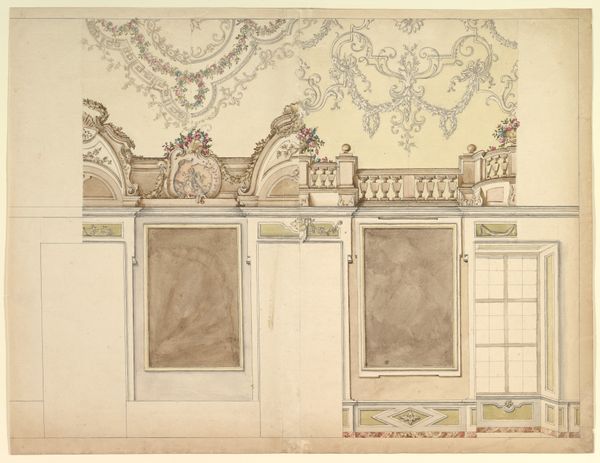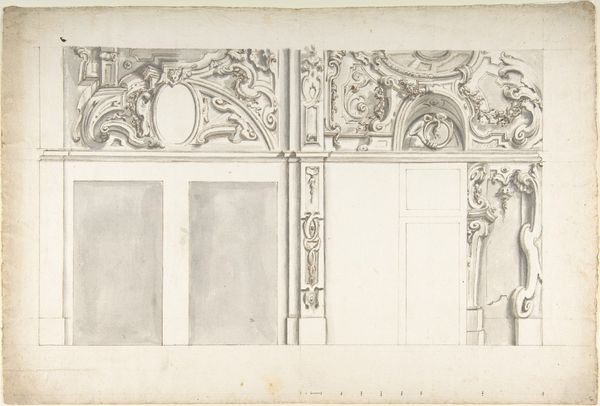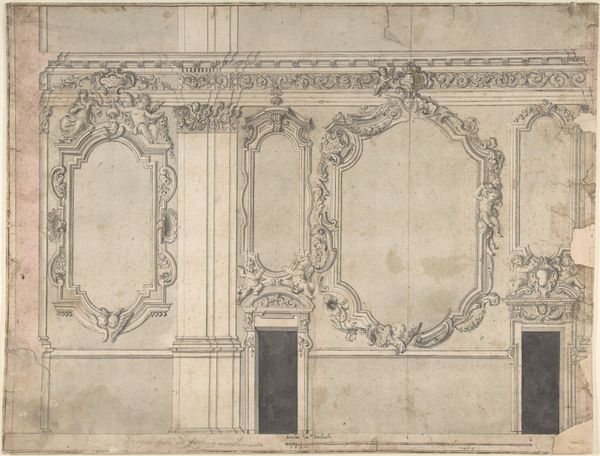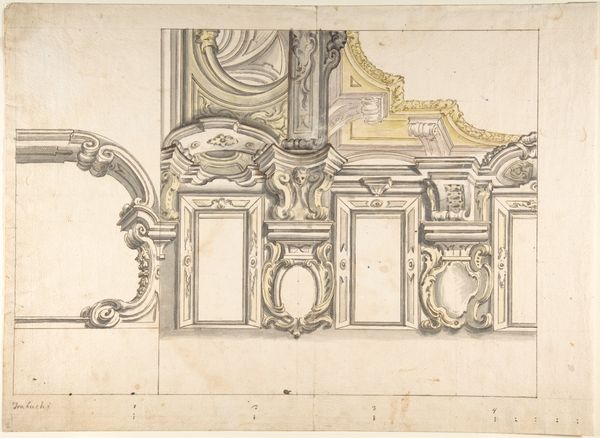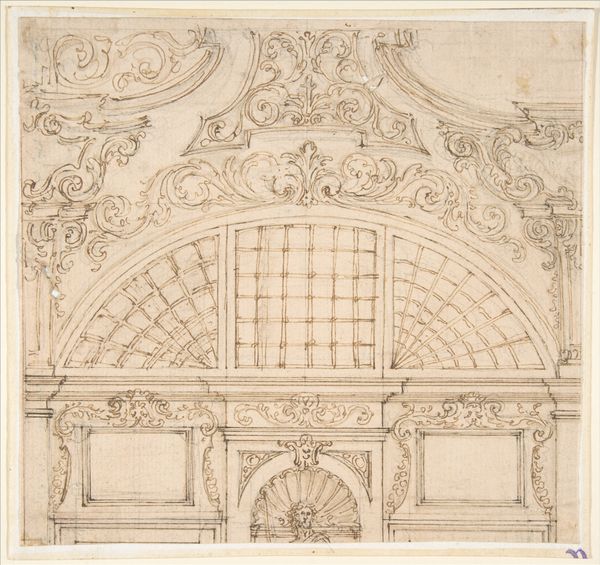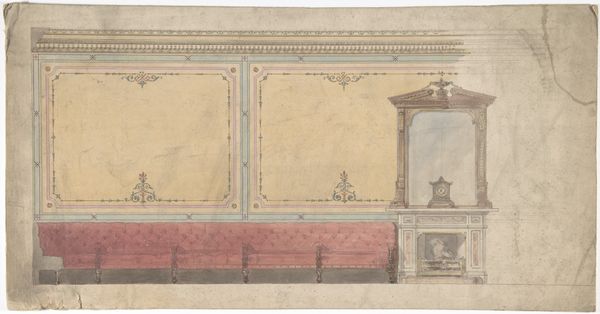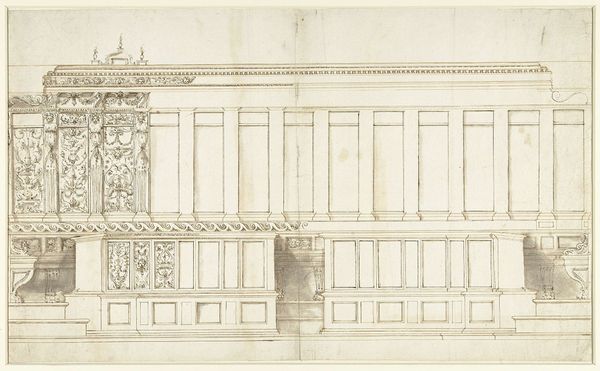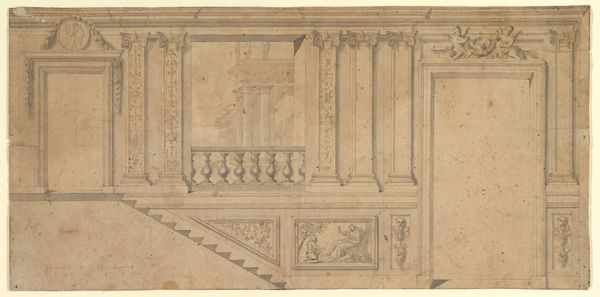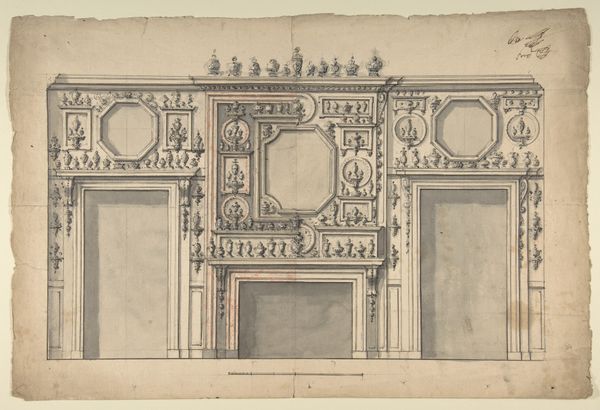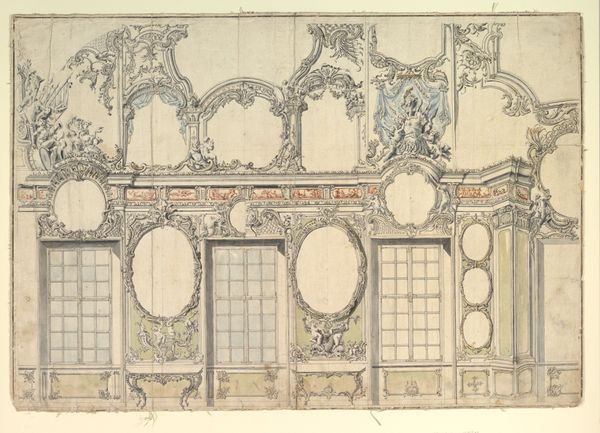
Design for the Interior of a Gallery of a Palace 1760 - 1797
0:00
0:00
drawing, print, pen, architecture
#
architectural sketch
#
drawing
# print
#
pen
#
architecture
Dimensions: 11-5/8 x 17-5/16 in. (29.6 x 44 cm)
Copyright: Public Domain
Curator: Wow, talk about envisioning grandeur. What jumps out at you about this design? Editor: Editor: Its ethereal feel. Like looking at a memory of opulence, slightly faded. It makes me wonder if the actual execution lived up to this initial fantasy of it, like an impossible dream realized, if that makes any sense. Curator: Absolutely. This ink and watercolor work, “Design for the Interior of a Gallery of a Palace,” comes to us from Leonardo Marini. Dating to between 1760 and 1797, it really captures the aspirations of the era. We have it here thanks to the Metropolitan Museum of Art. It shows a study in architectural optimism, with drawings made with pen. The ornamentation is just incredible. What details particularly strike you? Editor: Those friezes! Each panel a little jewel, really, from the cooing doves to the urns overflowing with floral excess. And that creamy palette—it practically whispers of wealth and leisure. There's such a focus on symmetrical ornamentation. What can you tell us about the world that desired all of this embellishment? Curator: Well, palatial designs in this era weren't merely about aesthetics; they were deeply entangled with displays of power. The precision, the scale, even the recurring motifs, it all reinforced a sense of control and permanence. It was as if every detail had to declare the owner's status and connection to a rich historical legacy. Think of Versailles and the endless aristocratic houses following the trend in the 18th century. These weren’t just homes; they were stage sets for performing dominance and justifying social hierarchies. Editor: It’s almost a kind of theater. With every sculpted detail a prop designed to evoke very particular feelings and thoughts in visitors, right? All these elements worked to create what must have been an environment of pretty overwhelming self-importance! I mean look at the size and spacing between columns; can you imagine feeling small as a person in a place such as that? Curator: It’s very clever how an architectural plan reveals more about social constructs than just artistic principles. Editor: I couldn’t agree more. Thank you for taking time to highlight how an unrealized project allows to glimpse at a vision, a world view frozen on paper.
Comments
No comments
Be the first to comment and join the conversation on the ultimate creative platform.
